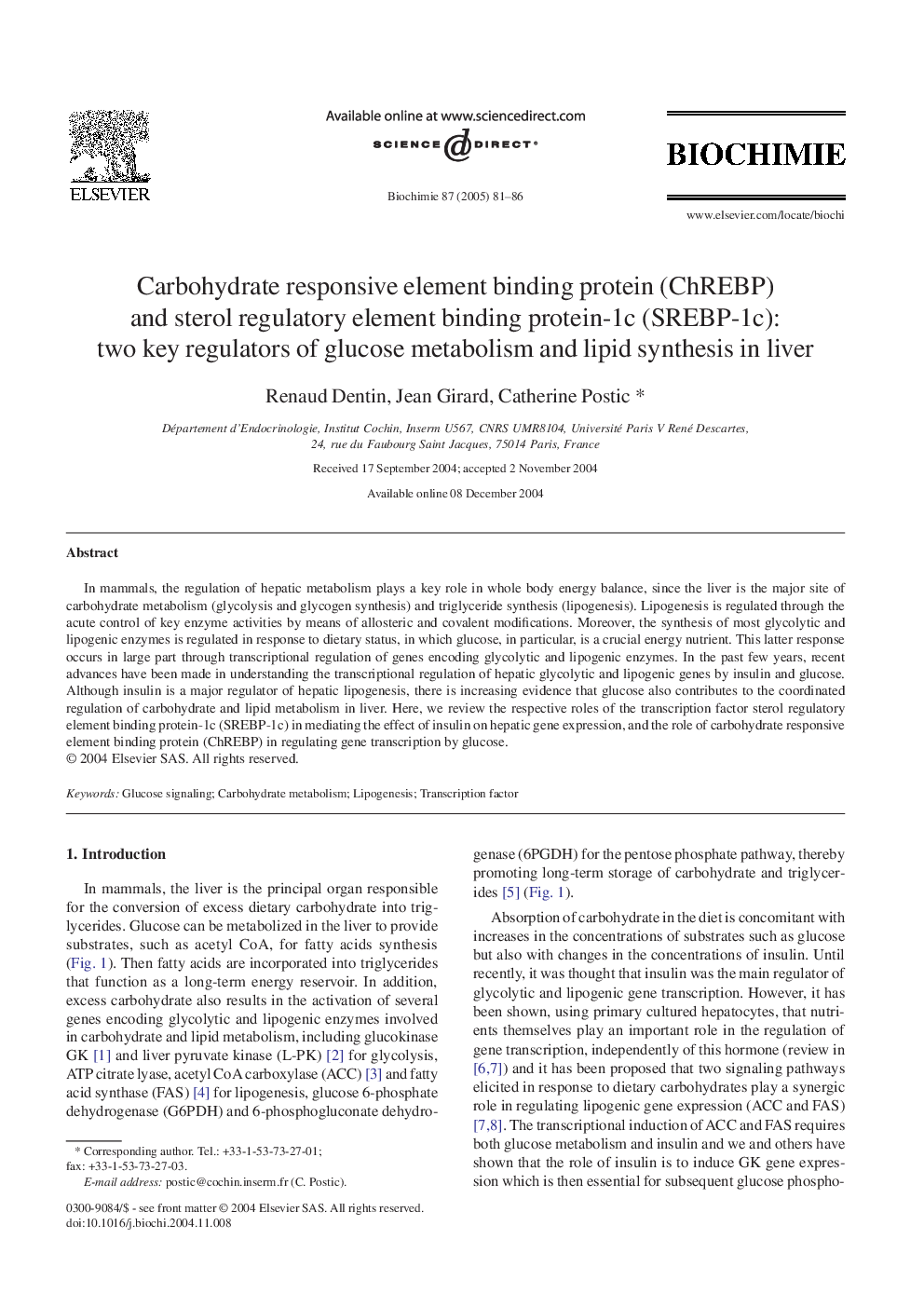| Article ID | Journal | Published Year | Pages | File Type |
|---|---|---|---|---|
| 10804404 | Biochimie | 2005 | 6 Pages |
Abstract
In mammals, the regulation of hepatic metabolism plays a key role in whole body energy balance, since the liver is the major site of carbohydrate metabolism (glycolysis and glycogen synthesis) and triglyceride synthesis (lipogenesis). Lipogenesis is regulated through the acute control of key enzyme activities by means of allosteric and covalent modifications. Moreover, the synthesis of most glycolytic and lipogenic enzymes is regulated in response to dietary status, in which glucose, in particular, is a crucial energy nutrient. This latter response occurs in large part through transcriptional regulation of genes encoding glycolytic and lipogenic enzymes. In the past few years, recent advances have been made in understanding the transcriptional regulation of hepatic glycolytic and lipogenic genes by insulin and glucose. Although insulin is a major regulator of hepatic lipogenesis, there is increasing evidence that glucose also contributes to the coordinated regulation of carbohydrate and lipid metabolism in liver. Here, we review the respective roles of the transcription factor sterol regulatory element binding protein-1c (SREBP-1c) in mediating the effect of insulin on hepatic gene expression, and the role of carbohydrate responsive element binding protein (ChREBP) in regulating gene transcription by glucose.
Related Topics
Life Sciences
Biochemistry, Genetics and Molecular Biology
Biochemistry
Authors
Renaud Dentin, Jean Girard, Catherine Postic,
